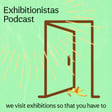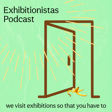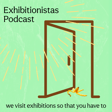
Lauren Halsey
EXHIBITIONISTAS CELEBRATES ONE YEAR OF PODCASTING! 🍌🍌🍌
If you want to give us a birthday present, we have ideas>>>>>
For a one-off donation: paypal.me/exhibitionistas
For a membership: https://www.patreon.com/c/exhibitionistaspodcast/membership
And now the episode. We talk about Lauren Halsey’s exhibition at the Serpentine Gallery, curated by Lizzie Carey-Thomas and Chris Bayley.
It's a maximalist environment that led us to a discussion about art, freedom, identity, revolution and care. It also allowed us to find out more about the myths and origins of the term Afro-Futurism, which surprised us a great deal.
To know more about the exhibition: https://www.serpentinegalleries.org/whats-on/lauren-halsey-emajendat/
We also mention Emily's friend, an artist using street signs in her work. Go to Instagram and check her out! @janeroerevolution
Music by Sarturn.


